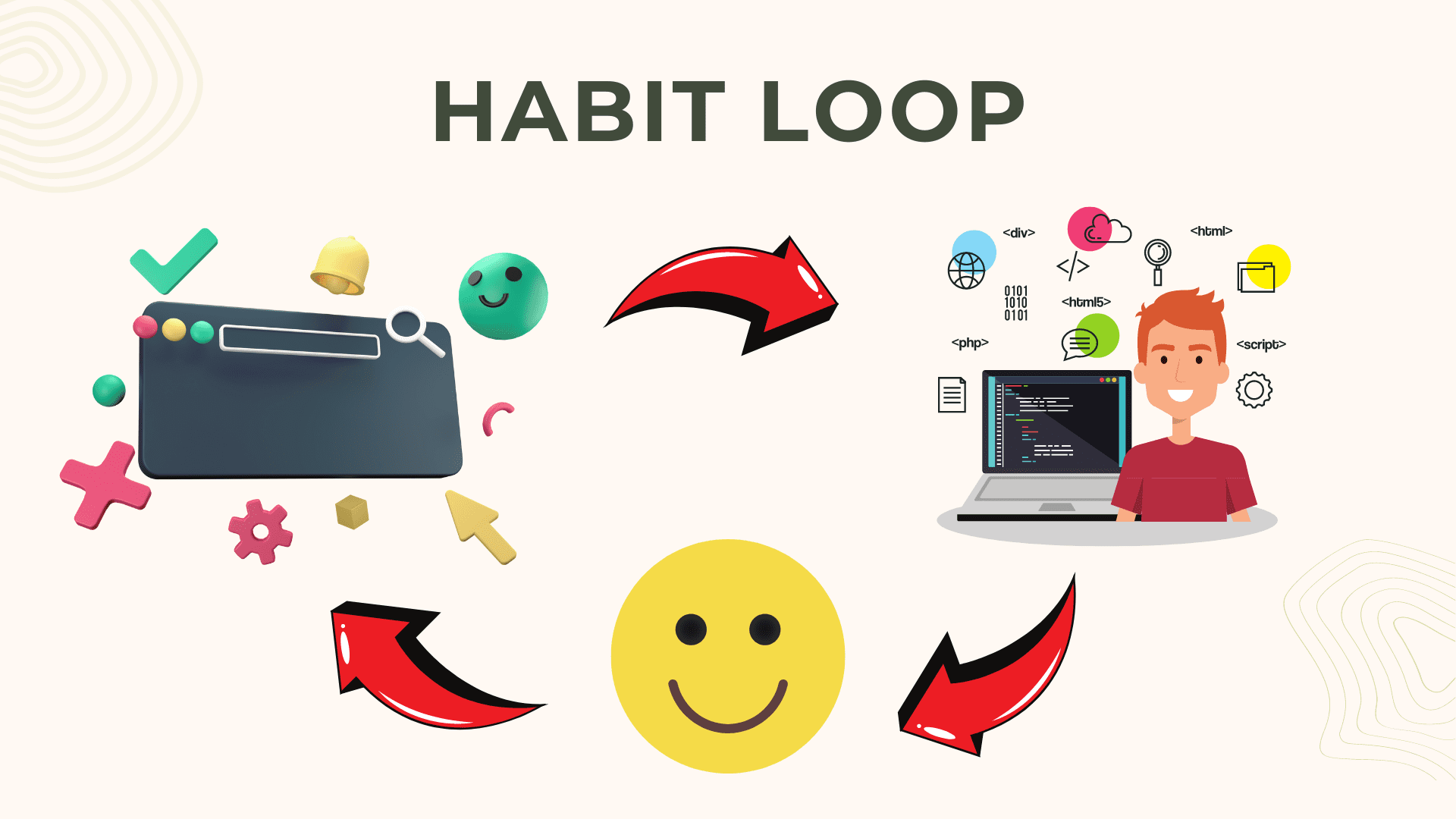5 Crucial Steps to Develop an Effective Coding Routine
Struggling to develop your coding routine? Well, I have some psychological insights to share that can boost your motivation and make a real difference in your coding journey.

Image by Author
Introduction
I remember diving into the pages of “Atomic Habits” by James Clear. It got me thinking about how psychology influences our daily lives. As a coder, I started to think of ways to harness these insights to create a coding regime that actually works. Trust me, if we can somehow master the art of our minds and how our brain learns, it can be a game-changer. After careful research and observation, I devised these 5 steps to sculpt an effective coding routine. Let us go through them one by one and witness how psychology can transform your coding experience:
1. The Power of Tiny Gains: Start with the 1% Rule
This strategy is great for beginners and to prevent burnout. It focuses on the importance of incremental progress and developing consistency over time. Inspired by the idea, I dedicated a mere fraction of my time (15 minutes) to coding. Although it seems trivial, it can pave the way for consistency. Our brain considers it less daunting and over a while, we start to gain confidence. It's like planting the seeds of progress that grows over time. You are not chasing perfection - you are embracing progress. Let me explain this to you mathematically:
Day 1: 15 minutes
Day 2: 15 minutes + 1% = 15.15 minutes
Day 3: 15.15 minutes + 1% = 15.303 minutes
Day 4: 15.303 minutes + 1% = 15.45803 minutes
... and so on
Cumulative Effect Over 30 Days:
After 30 days, your daily coding time would be around 22.44 minutes
After 60 days, your daily coding time would be around 33.81 minutes
After 90 days, your daily coding time would be around 51.07 minutes
After 180 days, your daily coding time would be around 140.61 minutes
… and so on
Taking these baby steps will help you develop the coding regime over time.
2. Cue, Routine, Reward: The Habit Loop
Let's talk about building habits. It's a loop where you start with a cue, do a routine, and then reap the reward. Here is how it works:
Cue: Something that reminds you it's time to work. It can be in the form of a particular environment, a specific time of day, or an emotional state. It triggers your brain and helps you get started.
Routine: This is your actual habit and is followed by a cue.
Reward: Finally, we have a reward in the form of a positive outcome or feeling that you get from completing the routine motivating you to repeat this behavior again in the future.
To make this work, I set up my dedicated coding space that acted as an initiator and my brain said "Hey, it's coding time!". I immersed myself in the coding followed by the sense of progress that I got from solving the coding challenge or decoding a problem. It was a mini victory that made it easier for me to re-enter this coding cycle.

Image by Author
3. Habit Stacking: Linking Coding with Existing Habits
You often experience the initial resistance while starting a new habit that can become remarkably smoother with Habit Stacking. It involves pairing up your old habit with the new one. It's easier because your brain likes patterns. There are 3 elements of habit stacking:
Anchor Habit (Existing Habit): It is something that you already do easily
New Habit (Desired Habit): Habit that you want to integrate.
Cue and Routine Fusion: Anchor habit acts as a cue for the new habit creating a seamless fusion
For me, I connected coding with my evening tea. As I sipped my tea, my brain reminded me it was time to code. So, while your water boils for tea, open your code editor – just like that, you're on your coding journey!
4. Environment Design: Shape Your Coding Environment
Guess what? Your environment has more impact on your mindset than you might think. They act as environmental cues subtly guiding our actions. Considering its importance, I dedicated a separate coding space for myself — a turning point in my journey. The absence of distractions and the intentional setup instantly put me in the coding mindset. Whenever my brain used to look at my workspace it knows that it's coding time now. This step heightened my concentration.

Image by storyset on Freepik
5. The Science of Rewards: Cultivate Intrinsic Motivation
Intrinsic motivation is closely tied to rewards. Rewards trigger the brain’s pleasure centers releasing dopamine, a chemical known for generating the feeling of pleasure. To reward myself, I set up some milestones and started celebrating each step of my progress by having a special meal. Pick projects that excite you. When you're curious, coding feels like an adventure, not a chore. Also, try to share your progress with others and surround yourself with positive people. Their feedback and words of encouragement can further strengthen your coding journey.
Conclusion
Congratulations! You've got the tools to build a good routine that rocks. As I conclude this article, I invite my readers to share their transformation journey. What coding habits have helped you out? Lastly, just remember that the effectiveness of the above-mentioned strategies may vary from person to person, so experiment and find what works best for you.
Kanwal Mehreen is an aspiring software developer with a keen interest in data science and applications of AI in medicine. Kanwal was selected as the Google Generation Scholar 2022 for the APAC region. Kanwal loves to share technical knowledge by writing articles on trending topics, and is passionate about improving the representation of women in tech industry.
